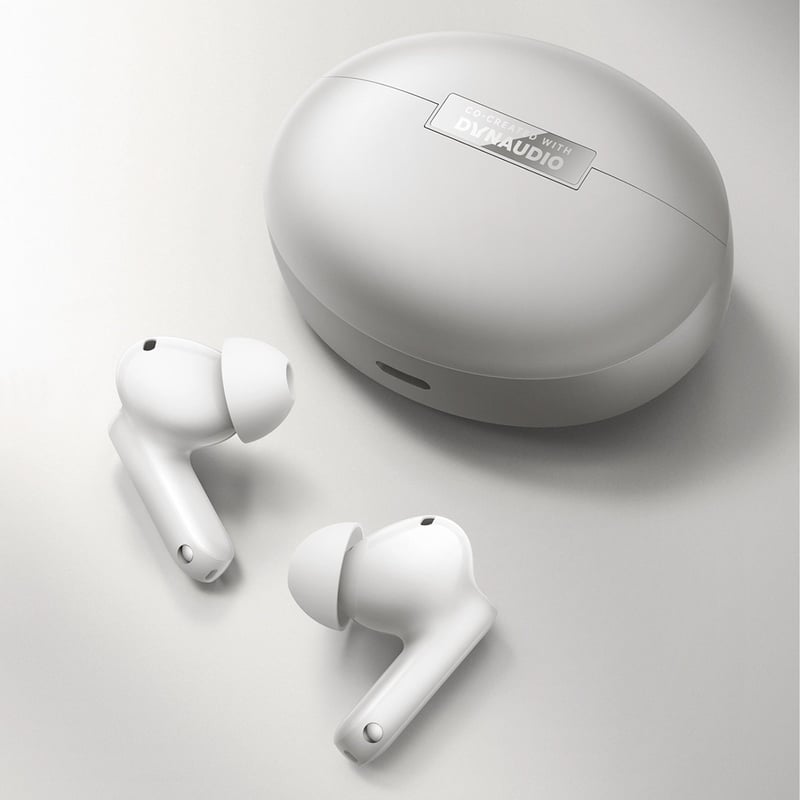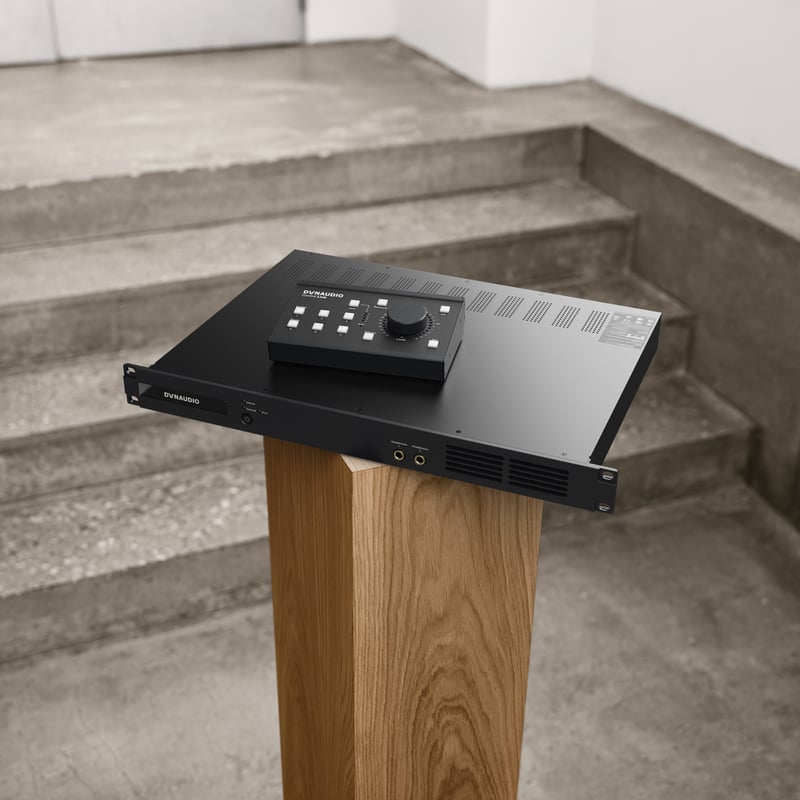Daniel Emonts, Dynaudio’s Senior Acoustics Designer, gets warmed up when he speaks about our new Evoke speakers. “They’re not only great speakers,” he says proudly. “They’re by far the best speakers in their category Dynaudio has ever produced.”
Which is nice. But how do you get to that point? Designing a new speaker and testing it is incredibly laborious, particularly when it’s done by perfectionists. The only way to get it right is through testing. Lots of it. “Developing a good speaker is very time consuming,” says Daniel. In fact, testing is only part of the package. Fine tuning, designing and actually listening to the speakers (the most important thing of all) all add time to the process.
It’s tempting to describe Dynaudio’s measuring facility – Jupiter – as a secret weapon. But it would be tough to keep such a big installation secret, particularly one with a huge robot at its heart. There are a lot of things you could do with a colossal room and a giant robot. Build spaceships, plan world domination, that kind of thing. We use Jupiter for something else, and it made a universe of difference when it came to designing, refining and delivering Evoke.
Size really does matter
Jupiter is big. Very big. It’s a giant, hollow cube, measuring 13 metres in every dimension, that forms the core of the dedicated Dynaudio Labs building. Jupiter is packed with technology that allows the room to provide infinitesimally small measurements of every Dynaudio product we put in there. The monolithic new Confidence 60, the Core family, Evoke, even the bijou Music 1… it’s all been in there.
The way the room works is fascinating. A speaker can be measured individually or, given the room’s size, engineers can install several speakers at once to simulate the typical home audio setup (not many high-end hi-fi owners have just one speaker). Then, the robot arm – with its 31 microphones – takes a 360° measurement. So we end up knowing how a speaker sounds not only in the sweet-spot, but from everywhere else too.
The old-school way of doing that would’ve been to use an anechoic chamber – a room full of sound-dampening material that almost completely eliminates echoes and reverberations. Clap your hands right now; unless you’re actually in an anechoic chamber this very second (and if you are, then why?), you’ll hear the sound tail off. Anechoic chambers get rid of that by absorbing that extra energy and remaining totally quiet (some to the point where you can hear your own heartbeat and joints creaking).
The problem is, anechoic chambers don’t tend to work so well when you delve down really deep into the frequency range. Their weird wedges and foamy bits only really work well in the midrange and treble. The only way to get around that is to make the room bigger – which means more acoustic treatment, much more cost, and not that much gain.
Instead, we’re able to simulate the good effects of an anechoic chamber inside Jupiter without having to deal with the undesirable ones thanks to its sheer size. Simply put, we shut off the microphones between their measuring the impulse sound (an instantaneous ‘click’ that contains all frequencies) and the reflection coming back off the walls. It’s split-second stuff, but it effectively takes the room out of the equation.
Bring Jupiter up with Dynaudio folk and you’re in for a fascinating time. “I would say the development process is sped up by at least three or four times,” says Daniel. Jupiter’s scale is chiefly responsible for that. Before Jupiter, the team needed to make a three-hour round trip from its base in Skanderborg up to Aalborg, where a much smaller facility made a three-day meal of measuring a speaker. “Jupiter’s big,” says Daniel, “so two teams can work at more or less the same time, using different equipment. Also, because of its size, some speaker setups can stay together so we don’t have to move them around all the time.” A measuring job that used to take days can now be finished in half an hour.
Daniel isn’t the only person at Dynaudio to evangelise about Jupiter. Alex Newman is just as enthusiastic. “Jupiter’s amazing because of how fast we can do these things,” he adds. “I might have spent hours in there refining Evoke, but if I was doing it any other way I would be in there for weeks.”
The appliance of science
The system allows for a huge number of measurements. That robot? Mounted with 31 microphones at 6° intervals, it measures 180° of sound in a single go. The arc can rotate, and the stand that the test subject is on rotates too, allowing for 360° of measuring. The software that drives Jupiter is an in-house creation by Dynaudio’s engineers.
The importance of rigorous, scientific testing shouldn’t be underestimated. “Measurements are indispensable in audio,” says Daniel. “Anyone who says they’re not necessary is ignorant. We need a lot of data to estimate the range of use of a driver.”
But, he adds, experienced ears are still critical to the end product: “Two equally flat curves made with different crossover topologies could sound quite different – here, the engineer’s expertise is a major part of a successful speaker.”
Testing that took weeks now takes days, and testing that took days has turned into minutes. And, you could argue, that’s a double-edged sword in the hands of perfectionists – the temptation is to tweak, and tweak and tweak (and tweak), in the name of an ever more perfect speaker. A better product. Something of infinitely high quality to grace the living rooms of the world’s most demanding hi-fi listeners.
“We run out of time,” says Alex. “There’s always something else you can do.” Everything from the cabinet size to the supplier of the internal damping material is up for grabs, and every test performed by Jupiter and its team of engineers yields interesting, actionable results. “That’s why it’s good to have a deadline,” says Alex. “It forces you to finish it.”
A good engineer is never satisfied. We all know that. But that’s the way they like it. “I wouldn’t be doing this any more if I was satisfied,” he tells us of his constant quest for audio excellence. “If I was, what would I be trying to achieve after that?”
Alex and his cohort of engineers might lament that they’re not allowed to test forever, constantly whittling, refining, testing and repeating until the process yields a speaker that produces details even the most detail-oriented producer would never imagine. But their loss is our gain, and with the Evoke systems locked and ready to ship, they can move on to the next set of incredible Dynaudio products.
In the ears of our engineers, nothing will ever be perfect – but Jupiter allows us to get breathtakingly close.
Sign up to get more great articles
Nothing compares to the satisfaction of knowing – for a fact – that something is as good as it gets





